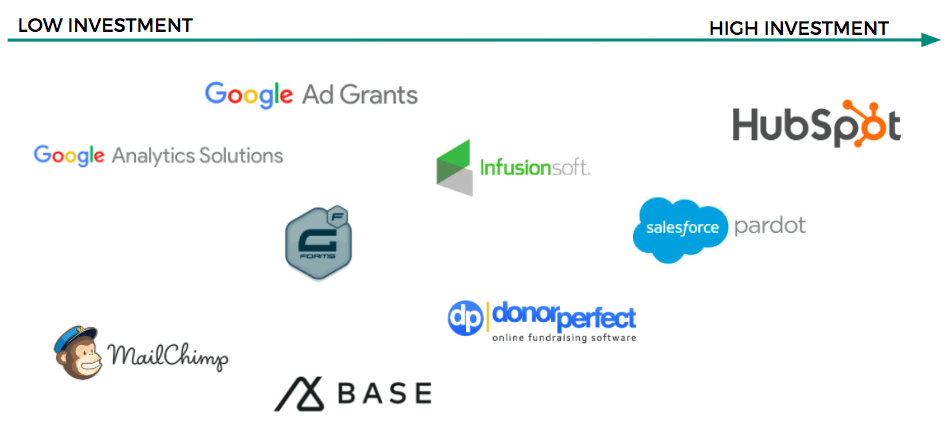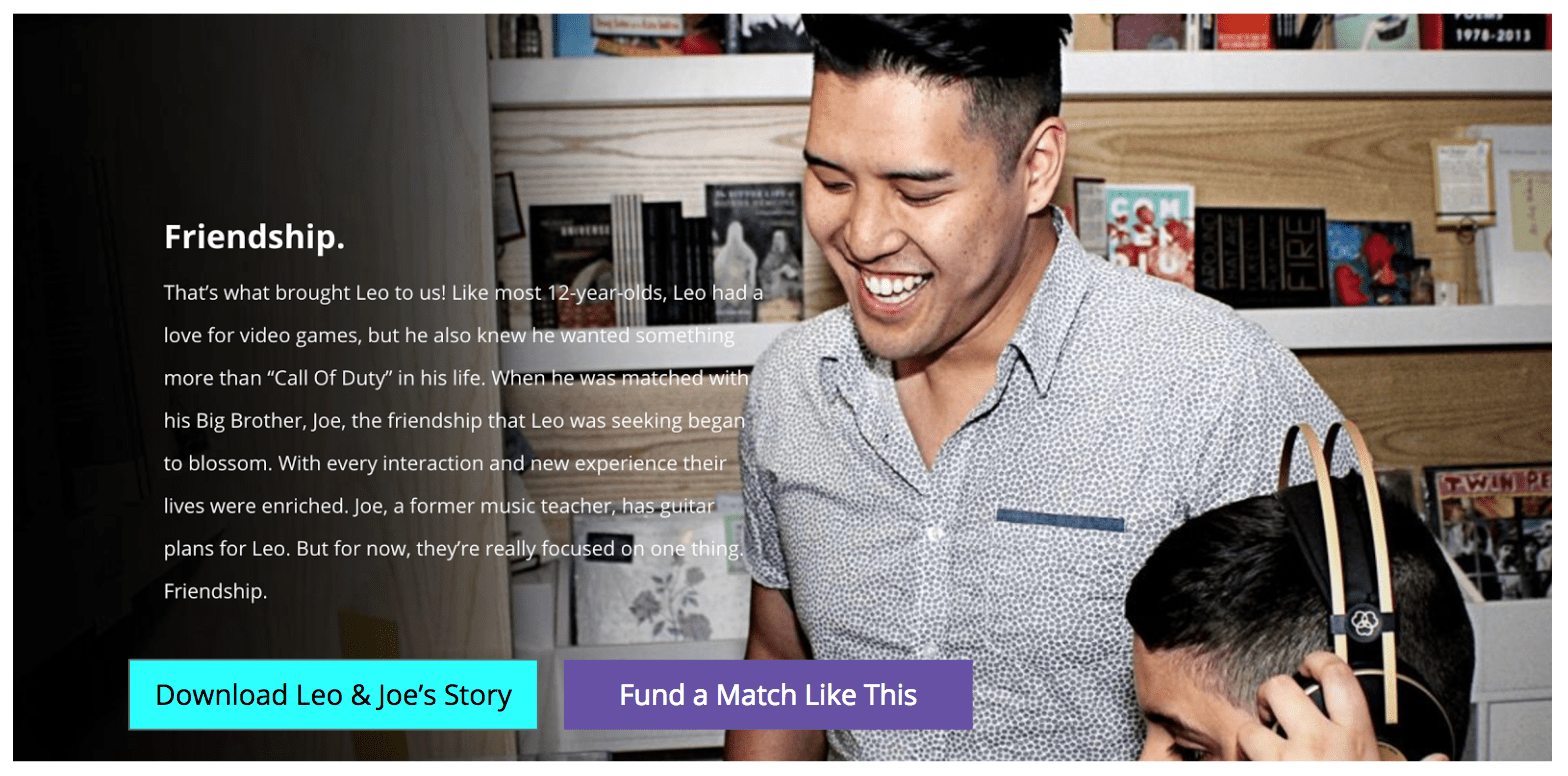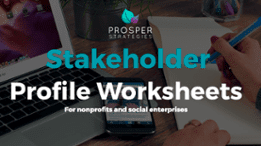As you learned from our first installation in this series on nonprofit inbound marketing, inbound tactics can be very useful for nonprofit fundraising. Inbound marketing brings in 54 percent more leads than more “traditional” tactics like mass mailings or radio ads. That makes sense. The people you reach with inbound content are more likely to be the people who really care about what you have to say and are interested in supporting your cause.
But for nonprofits, inbound marketing can be used to reach more than just prospective donors. You can take advantage of inbound marketing to help you educate and activate all of your stakeholders.
We’ll show you how.
[bctt tweet=”Inbound marketing brings in 54 percent more leads than more “traditional” tactics.” username=”ProsperStrat”]How nonprofit inbound marketing works
We previously discussed how nonprofit inbound marketing works in part one of this blog series. As a recap, inbound marketing is industry lingo for “organically” grabbing the attention of individuals who might be interested in your organization through well-crafted, engaging content like blogs, special reports, infographics, quizzes, digital advertising and more. Once you have their interest, they can opt in to receive more information from your organization or take an action.
Here’s a handy illustration of a sample nonprofit inbound marketing funnel:

As you can see, your stakeholders can go all the way from strangers who know absolutely nothing about your organization to true advocates with the assistance of nonprofit inbound marketing. You can’t say the same for a billboard.
I’ll use one of our clients as an example of how effective nonprofit inbound marketing can be done. The Illinois Environmental Council (IEC), an environmental lobbying organization, created resources to educate concerned citizens in Illinois about the problem of the dwindling pollinator population. Then, they provided opportunities for those stakeholders to donate to support the protection of Monarch butterfly habitats in the state. Donors received special Monarch butterfly license plate decals that helped to spread the word even further.
So, how did inbound marketing help drive interest to IEC’s cause? As concerned people in Illinois became curious about what they could do to help Monarch butterflies, they used Google to search for more information. That’s when they were met with content from IEC’s website, where they could learn more and were encouraged to donate. If they did donate, they received a decal that showed their support and raised further awareness.
These efforts created even more buzz around this important issue. So, IEC and other lobbying organizations were able to demonstrate a growing base of support in Illinois for protecting milkweed –– the plant Monarch butterfly larvae need to survive. Then, in March 2017, with the help of IEC and other partner organizations’ lobbying efforts, a bill to prevent the banning of milkweed was passed in the Illinois House, and then the Senate in November. Of course, inbound marketing wasn’t the only tactic at play here. But, inbound helped to shine a brighter light on the issue so more citizens knew why the change was necessary, and how to show their support for pollinator environments to Illinois lawmakers.
To execute nonprofit inbound marketing in the most effective way and see the success of a campaign like that of the IEC’s, you have to craft each piece of content with your stakeholders’ unique needs, goals and expectations in mind.
How you can tailor unique content to educate and activate each of your stakeholders
Inbound marketing can play a very different role for each individual stakeholder, which is why you shouldn’t use tactics the same way across unique audiences. Here, we’ll outline how you can plan to address your stakeholder groups using nonprofit inbound marketing tactics.
Create stakeholder profiles
First and foremost, you have to know what makes your stakeholders tick. To get a better understanding of your stakeholders, develop specific, personified descriptions of the people who have the most potential to impact the future success of your organization.
[bctt tweet=”To effectively reach each of your stakeholders, you need to know what makes them tick. ” username=”ProsperStrat”]These profiles will answer the questions:
- What do your stakeholders care most about?
- What do they expect from your organization?
- Why would they want to get involved with your cause by donating, volunteering or taking another action? (Or why might they not?)
- Where do they get information about causes like yours?
While much of these profiles will also be based on your personal experiences with your stakeholders, you can use additional research to confirm your instincts or resolve unanswered questions. You can download our stakeholder profile worksheets to help guide you through this process, or check out our blog on developing these profiles for a more robust walk-through of how to use the sheets.
Once your stakeholder profiles are complete, circulate them amongst your organization’s entire marketing team, leadership and board members, so they all understand the direction of your marketing efforts.
Draft content for each specific audience at each stage of their journey through the nonprofit inbound marketing funnel
“Content” is just marketing speak for any piece of writing, information or engaging material you put out there for your stakeholders to interact with. This includes social media activity, blogs, quizzes, in-depth informational resources and case studies, infographics, media coverage and more. In the case of the IEC example we used above, their inbound content included informative articles about Monarch pollinators and license plate decals.
You need to be able to entice your stakeholders with content they’ll actually care about –- no matter which stage they are in in their relationship with your organization. These stages are:
Awareness
When you’re educating your stakeholders in the awareness phase, you’ll put more emphasis on the problem your organization solves than your organization itself through tactics like blogging, social media, quizzes and media relations. No matter the content format, it should be interesting to someone who may not yet be familiar with your organization but is interested in your cause.
In a theoretical example, let’s say nonprofit organization Big Brothers, Big Sisters is hoping to attract more donors, volunteers (“bigs”) and participants (“littles”). In the awareness phase, they might spotlight successful big/little matches in social media posts, write and promote blogs about the importance of positive role models for young people, and encourage stakeholders to opt in to learn more about their specific programs.
Your goal at this stage is to get your stakeholders to express further interest in your mission. They’ll do this by providing their email address to receive email updates, access a quiz or view another resource.
Consideration
Now, with that email address you received in the awareness phase, you know the person is interested in the challenges you exist to solve, and you have the opportunity to continue to educate them about what your organization actually does. Your primary goal is to identify the people most likely to take further action to support your organization by observing how they interact with your content. Tactics at this stage might include more in-depth blogs that specify what your organization does, consistent email updates and social media posts that encourage shares and follows.
So, continuing with Big Brothers, Big Sisters as an example, in this stage, they might post blogs about activities bigs and littles participate in together and their benefits, and send email newsletters to subscribers.
During this stage, you may want to utilize inbound marketing tools such as HubSpot, Pardot and Constant Contact to amplify your content — these tools can greatly impact the results of your campaigns. The National Fatherhood Institute, for example, saw a 40 percent increase in website traffic and 500 percent increase in contacts using HubSpot.

A couple things to consider as you engage your audiences:
- If your research indicates that one of your stakeholder groups is more likely to access your content via a mobile device, ensure your targeted engagement content for that group is optimized for that device. (Although, of course, it’s a good idea for everything you do to be optimized for mobile in 2018!)
- Frequency is also key during this stage. Is one of your stakeholder groups more likely to engage with daily or weekly content? Is another group likely to feel bombarded by messaging that comes more often than once monthly? Keep this in mind as you engage with your stakeholders.
Decision
Once your stakeholders are engaged, provide a final piece of information that will complete your case and get your stakeholders to take the action you want. Specifically target the individuals who have been most active to this point and ensure your messaging is tailored to your stakeholders’ unique perspectives. What will get potential volunteers to finally register for a timeslot? Maybe an email blast listing your latest opportunities and the impact they’ll make with their time. What will encourage past donors to make future donations? Perhaps a monthly report on the work your organization has been able to complete with help of generous donations like theirs in the past and an itemized list of what you hope to accomplish with more donations in the coming month.
At this stage, Big Brothers, Big Sisters could create case studies that feature full success stories of matched bigs and littles. These case studies can be featured in emails and on their website, prompting potential volunteers to make their final choice to get involved, or for potential donors to provide their support.

Provide clear calls-to-action at every stage
Even if you’re just providing initial, educational information to your stakeholders about your organization’s cause, you need an easy call-to-action to get them to the next phase of the nonprofit inbound marketing funnel. Sample calls-to-action include further engaging by subscribing to receive email updates from you, downloading a document with more data about your cause, and ultimately, an action like making a donation or signing up to volunteer.
Stay tuned for part three of this blog series, coming soon. In the meantime, download our stakeholder profile worksheets to get started crafting personas to effectively communicate with your nonprofit stakeholders.

To appropriately educate and activate your stakeholders, you have to understand them.
Through working with numerous nonprofits and identifying their target stakeholders, we’ve developed a streamlined system for identifying an organization’s most crucial audiences and how to communicate with them. Download our worksheets now to get started crafting stakeholder profiles for your most influential audiences. Those profiles will then help you craft unique content tailored for each.
